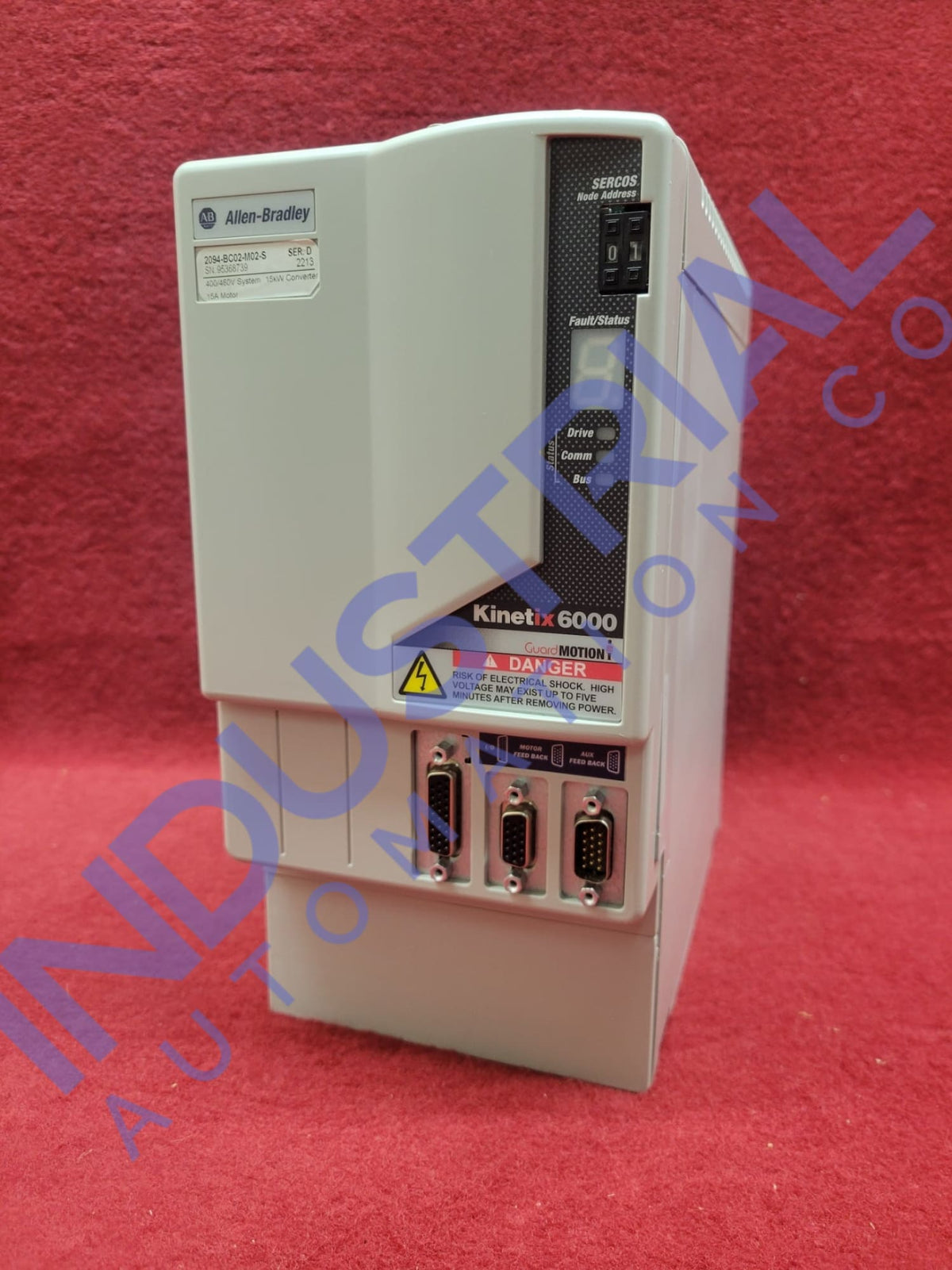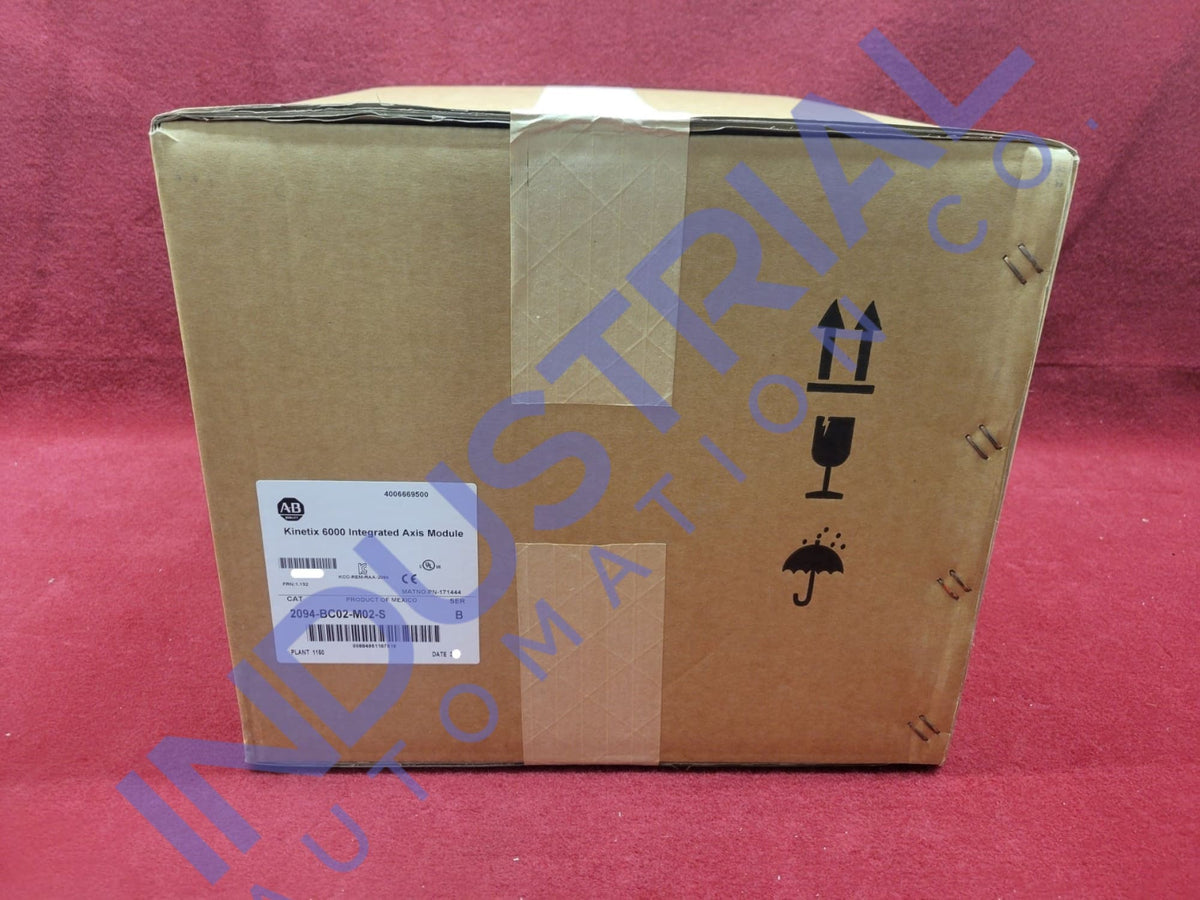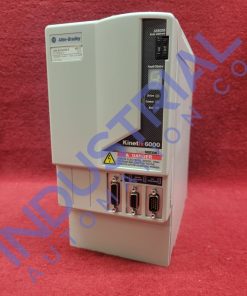Allen-Bradley 2094-BC02-M02-S Industrial Automation Co.
$ 4.090,00 $ 1.022,50
Allen-Bradley 2094-BC02-M02-S
The Allen-Bradley 2094-BC02-M02-S is a sophisticated and robust component for high-performance motion control applications. Its impressive specifications, high efficiency, substantial current handling capabilities, and safety features make it a reliable choice for demanding industrial environments.
Technical Details:
Allen-Bradley 2094-BC02-M02-S operates within a 400V AC class and offers robust output capabilities. Precisely, it delivers a continuous output current to the bus of 22.6 A, peak output currents of 45.2 A for Series A, and up to 56.4 A for Series B, C, and D drives.
The module boasts an impressive efficiency rating of 97%, which underscores its capability to convert input power into usable output with minimal losses. This high efficiency is critical for reducing operational costs and improving overall system performance.
The module also includes an internal shunt resistor rated at 115 ohms, with a continuous power dissipation capacity of 50 watts and peak power handling up to 5.6 kilowatts. These specifications are vital for managing energy dissipation during braking and other dynamic operations.
Weighing in at 11.2 pounds (5.08 kilograms), the Allen-Bradley 2094-BC02-M02-S is relatively lightweight for its capabilities, facilitating easier installation and integration into various industrial setups.
Installation and Mounting Instructions:
Installing and mounting the Allen-Bradley 2094-BC02-M02-S requires careful adherence to predetermined rules to guarantee safety and optimal performance. Before beginning the installation process, it is crucial to review all relevant safety instructions and verify that the power is disconnected from the system to prevent accidental electrical hazards.
Start by selecting an appropriate location for the module. The installation site should be free from excessive dust, moisture, and corrosive substances. Verify that the surrounding air temperature and humidity are within the module’s designated operating parameters.
Mount the module securely onto a flat, stable surface. The Allen-Bradley 2094-BC02-M02-S is designed to be mounted vertically to facilitate proper cooling and to comply with its thermal management specifications. Use the mounting holes provided on the module’s casing to attach it to the chosen surface.
When installing multiple modules, maintain adequate spacing between units to promote effective heat dissipation and avoid thermal interference. Ensure that all connected cables are of the appropriate type and rating for the module’s power and signal requirements.
Safety Precautions:
When working with electrical components, personal protective equipment (PPE) should always be worn. This includes insulated gloves, safety glasses, and appropriate footwear. These measures help to protect against potential electrical hazards and mechanical injuries.
When handling the Allen-Bradley 2094-BC02-M02-S, avoid damaging any of its components. Handle the module with its casing rather than connectors or electronic parts to prevent damage to electrostatic discharge (ESD).
Regular maintenance and inspections are vital for ongoing safety. Periodically check the module and its connections for signs of wear, damage, or overheating. Address any issues immediately to prevent escalation into more significant problems.
Frequently Asked Questions:
What is the short-circuit current rating of the Allen-Bradley 2094-BC02-M02-S?
The Allen-Bradley 2094-BC02-M02-S features a symmetrical short-circuit current rating of 200,000 A (rms). This high rating significantly enhances its safety and robustness, effectively allowing the module to handle challenging electrical environments.
Does the module require any adjustments for different frequencies?
No adjustments are typically required for different frequencies within the 47 to 63 Hz range. The Allen-Bradley 2094-BC02-M02-S is designed to handle these variations automatically, ensuring seamless integration into various power systems.
How do I activate the STO function on the Allen-Bradley 2094-BC02-M02-S?
Proper configuration is required for activating the STO function. This typically involves wiring specific safety circuits and configuring the drive’s safety parameters.
Product Specifications Table
| Condition | IAC Certified Refurbished, Surplus Original Box |
|---|
Fast Shipping & Professional Packing
Because of our long-standing partnership with UPS, FedEx, DHL as well as a range of other top global carriers we can provide a variety of shipping options. Our warehouse staff is highly skilled and will package your items in accordance with our exact and precise specifications. Your items are carefully inspected and securely secured prior to shipment. Every day we ship hundreds of packages to our customers across many countries. This shows our commitment to become the biggest online retailer in the world. Both Europe and the USA have warehouses and distribution centers.
Orders that contain more than one item are given processing time according to each item.
Prior to shipment, we inspect the ordered items thoroughly before sending the items. The majority of orders will be shipped within 48 hours. The delivery time is estimated to be between three and seven days.
Returns
The stock is constantly changing and not fully managed by us due to the involvement of several entities, including the factory as well as our warehouse. The levels of stock can change at any moment. Please be aware that it's possible that your order will become unavailable even after you have placed the order.
Our policy is valid for 30 days. If you don't receive the product within the 30 days period, we are not able to issue a refund or an exchange.
The item you purchase must be in the original packaging and in good condition. It must also not be used. It must also be returned in the original packaging.
Related products
Uncategorized
Uncategorized
Uncategorized
Uncategorized
Uncategorized
Uncategorized
Uncategorized
Uncategorized
Uncategorized
Uncategorized
Uncategorized
Uncategorized
Uncategorized
Uncategorized
Uncategorized
Uncategorized
Uncategorized
Uncategorized
Uncategorized
Uncategorized
Uncategorized
Uncategorized
Uncategorized
Uncategorized
Uncategorized
Uncategorized
Uncategorized
Uncategorized
Uncategorized
Uncategorized
Uncategorized
Uncategorized









































